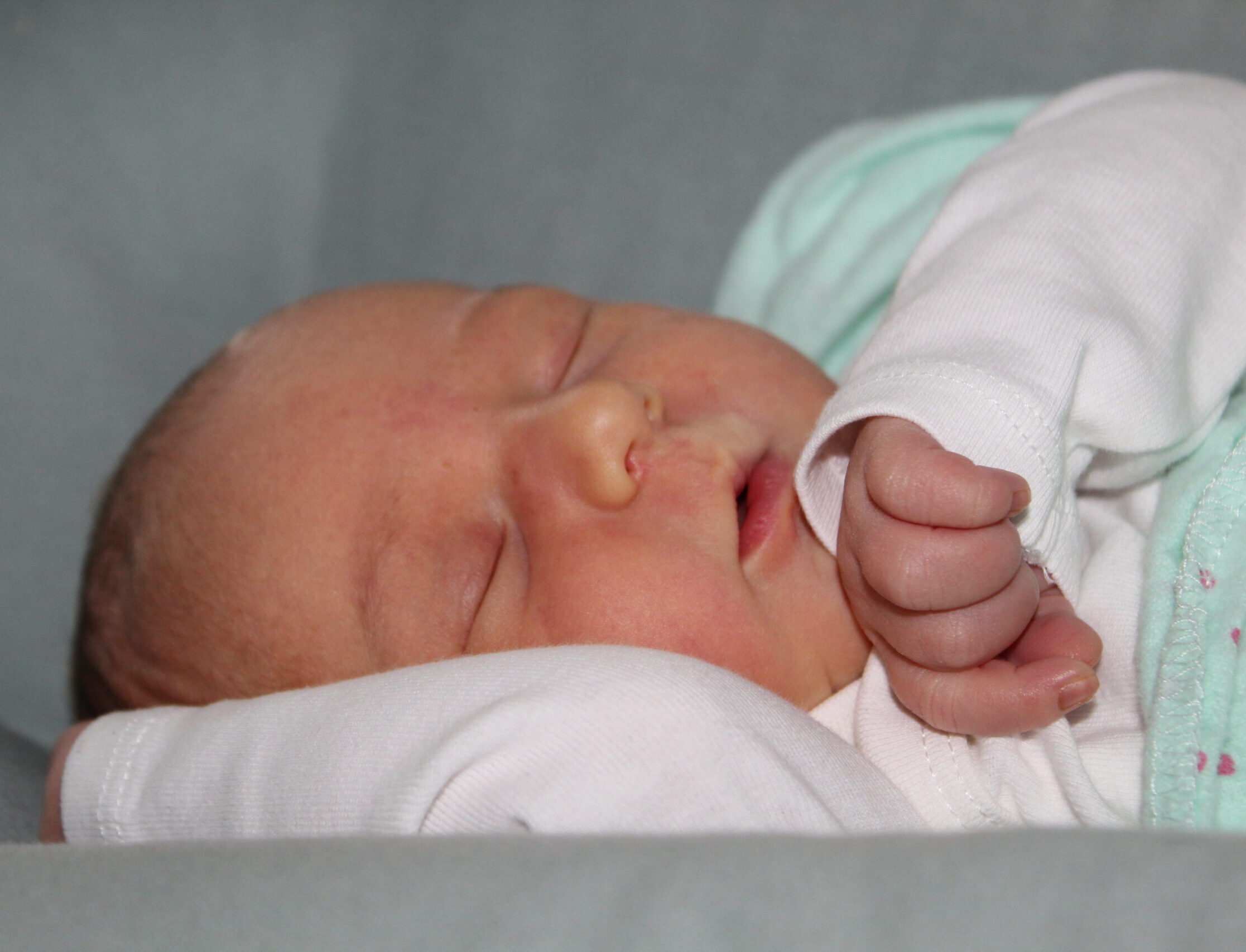Sleep can be tough to come by during the first 3 months of a baby’s life. These tips will help to establish a healthy foundation to optimize your baby’s sleep (and yours!) during this sensitive time.
Topics in this article:
- How to maximize your newborn’s sleep
- How to establish the optimal conditions for newborn sleep
- How to set a healthy foundation of good sleep for the future
I get asked all the time about what you can do to get better nights and naps in during the first 3 months. While baby is still very young and it is developmentally normal to have both short naps and frequent night wakings, we want to be sure we are setting the optimal foundation and conditions for sleep. Once your baby is 6-8 weeks, you can begin to lay the groundwork for a solid foundation of healthy sleep habits by following the tips below. This will help to optimize baby’s sleep and will set you on the path for success later on!
Avoid an Overtired Baby (Tip #1):
Babies are only able to sustain certain amounts of awake time based on their age (as they get older, they can stay awake for longer periods of time). At 6-8 weeks, the baby’s awake window should be no more than 60 minutes. If you can synch up your baby’s sleep schedule to follow their age-appropriate awake window, your baby will be able to fall asleep easier and stay asleep longer! Babies who are not sleeping at their ideal times will often fight sleep, wake more frequently, and take shorter naps. Being aware of awake windows (according to the age of your baby) as well as watching for those early sleepy cues is key in avoiding an overtired baby and optimizing sleep! Do not listen to your mother when she tells you that your baby is sleeping too much during the day and that is why nights are hard!!
Establish an Optimal Sleep Routine & Environment (Tip #2):
At 6-8 weeks you can also start to work on establishing a consistent, optimal sleep environment. Babies tend to do best with consistency and repetition. Try to get baby’s room nice and dark (think cave-like) for both naps and night sleep (no night lights!). Blackout curtains or shades are a must (“Blackout EZ” is my preferred brand). White noise for both naps and bedtime will help drown out any external noise and serves as a great sleepy cue. The ideal temperature is between 68-72 degrees.
At 6-8 weeks you can begin to create a solid pre-sleep routine. This set series of events will serve as a sleepy cue for baby that sleep time is about to come. This should be a very repetitive and consistent series of events in baby’s space that lead up to sleep (it can include: feed, change diaper, into PJ’s, read a book, rock, sing, etc.- make it work for both of you!). This predictable routine will really help trigger the brain that sleep is coming and will also help facilitate melatonin production, the sleepy hormone. Aim for about 10 minutes before a nap and 20-30 minutes before bedtime.
Work toward some independence (Tip #3):
After your routine, if baby is calm, try putting them down drowsy but awake in their sleep space. They very well might just put themselves to sleep! If they start to fuss and need assistance to fall asleep this is absolutely fine at this age, but giving them the opportunity regularly to find their own way can help them figure out how to self-settle. It’s fine to let baby fuss for 5 minutes or so before offering assistance. You may only be successful 10% of the time and that’s ok. You will likely have the most success at the first nap of the day so I always recommend starting there. If baby is not settling on their own after a few minutes, you can try the “side to sleep” or “seated settling” in-bed techniques to help baby fall asleep in their crib:
Video demo of the side to sleep technique
Video demo of the seated settling technique
Follow an “eat, play, sleep” routine (Tip #4):
During the day, begin to establish an “eat, play, sleep” routine to help break the feeding-to-sleep association that can become very common and hard to move away from as baby gets older. This also helps to ensure that baby takes full feedings throughout the day (about every 3 hours) rather than many smaller snacks which can lead to baby feeling hungrier in the middle of the night.
Bottom line: Baby is still young and naps will organically lengthen and become more independent as he grows and develops. Before 3 months, we want to start to introduce some good habits but we also want to balance that with doing what works and ensuring the baby is meeting their daily sleep needs.
Looking for more support with your baby’s sleep? Check out my Sleep Support options!
